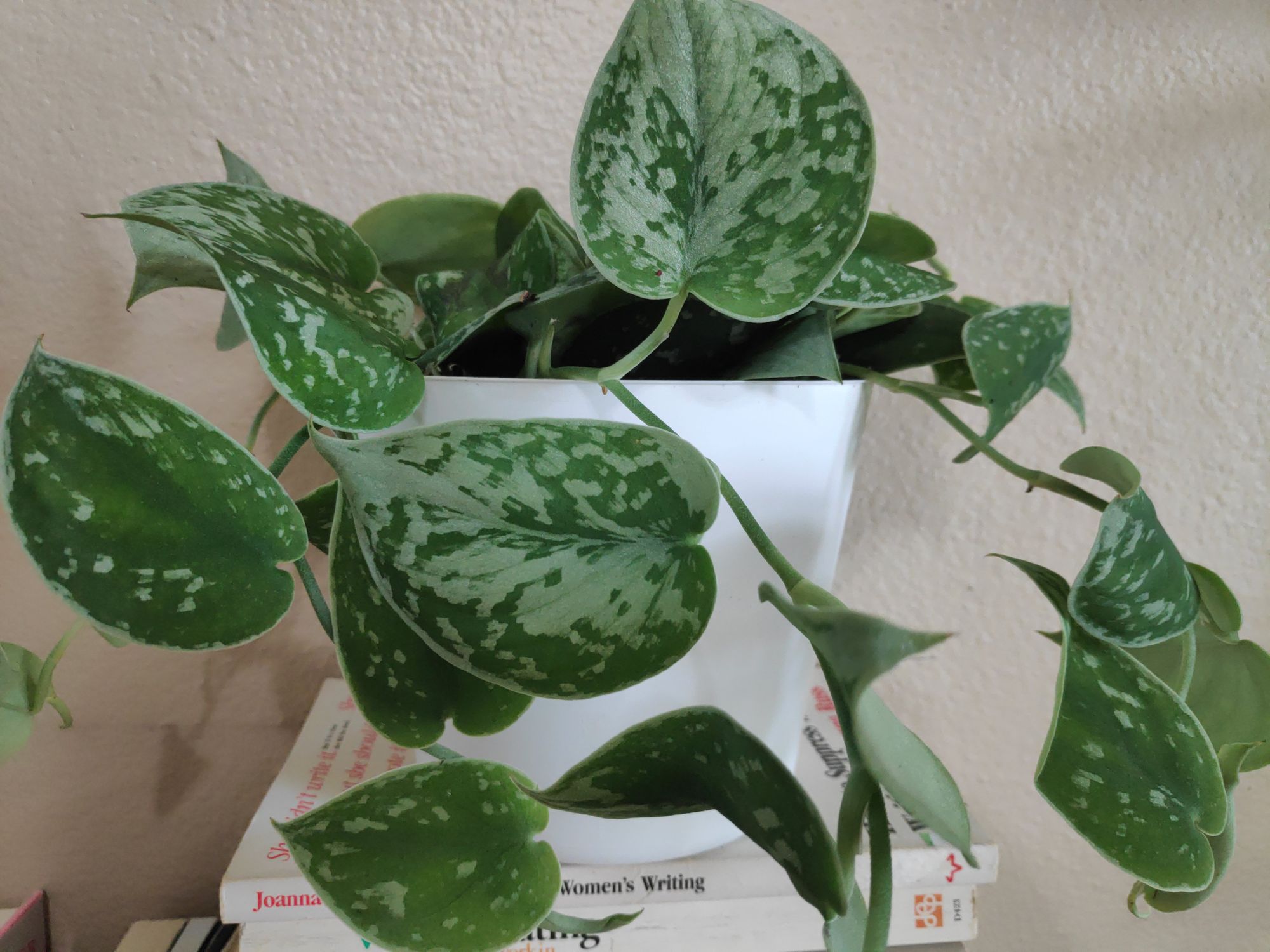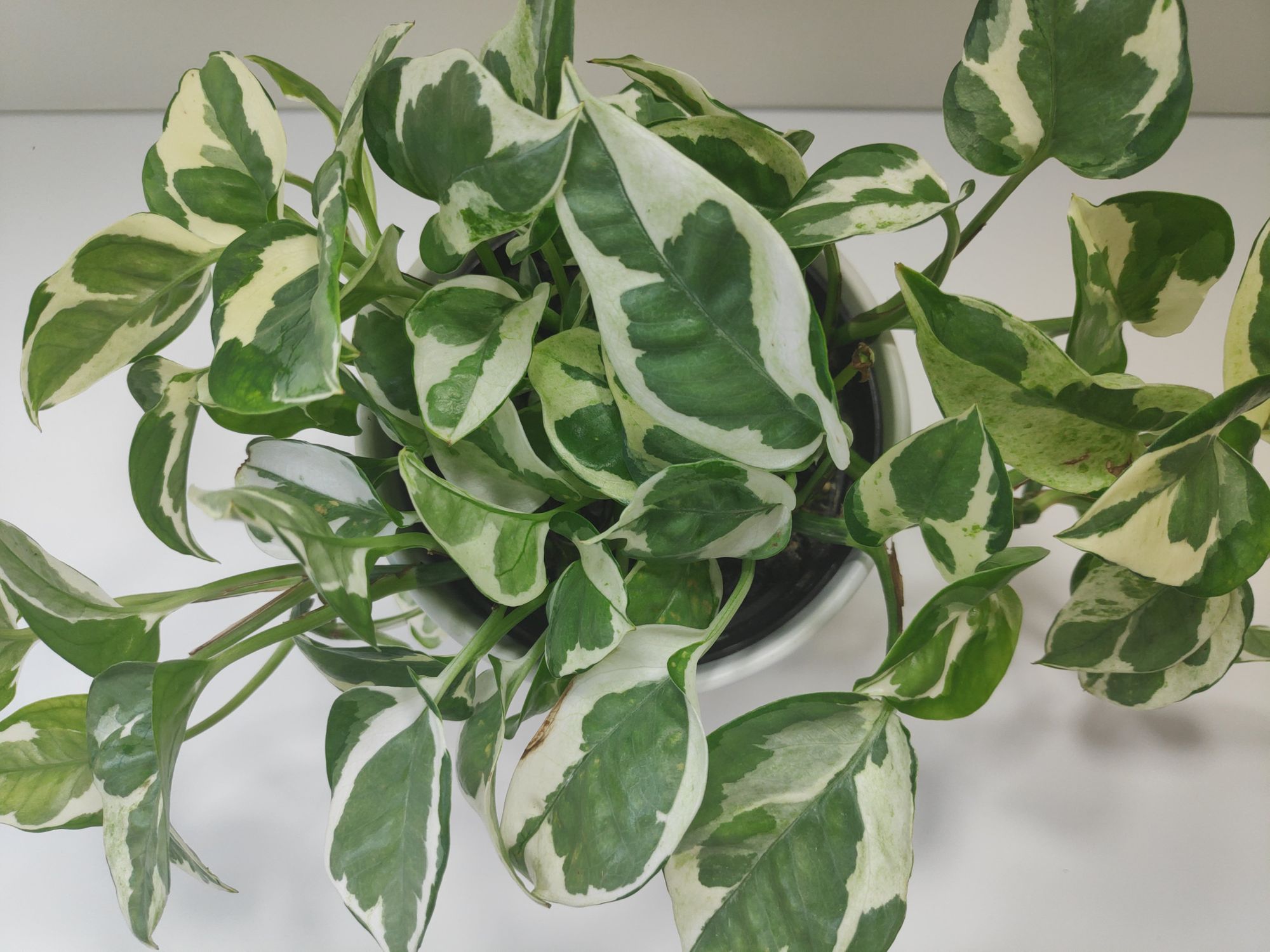Epiprenum aureum, common names: Devil's Ivy, Philodendron (misnomer)
Plant Care Cheat Sheet
Difficulty Level: Easy
Light Requirements: Medium light, can survive in low
Humidity Requirements: Room humidity okay
The pothos plant is one of the easiest and most ubiquitous houseplants. It is well-loved for it's ability to survive in nearly any light conditions, beautiful vining foliage, and ease of propagation.
Pothos comes in a variety of forms, including variegated varieties.
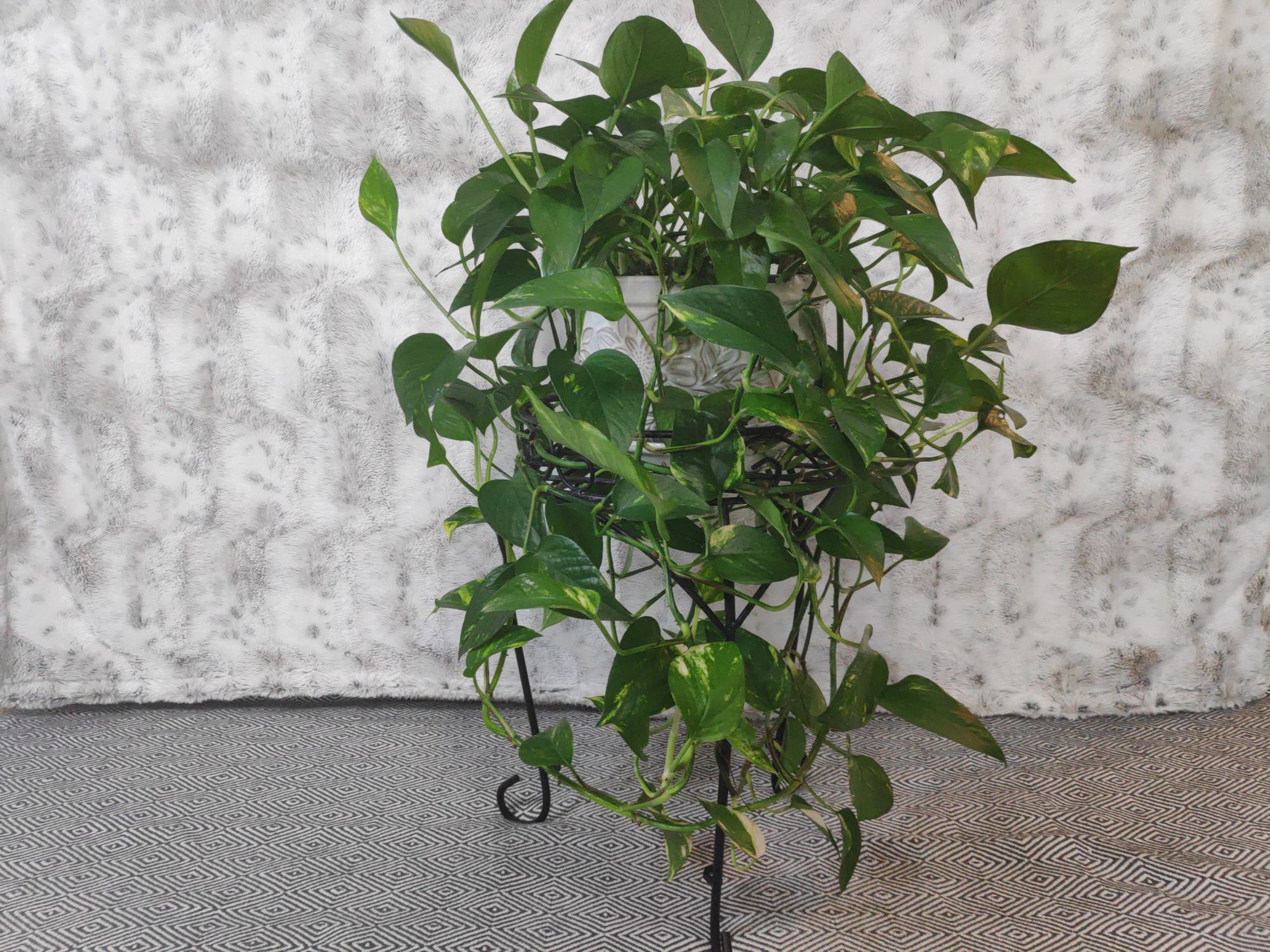
Light
Pothos can survive in low light conditions. (Keep in mind, low light does not mean no light!) However, a pothos will really thrive in medium to bright indirect light. Pothos leafs will grow larger and more beautiful if exposed to more light.
However, you'll want to avoid direct sun light. Too much sun will burn or bleach pothos leafs.
If your start to see your pothos plant becoming "leggy" (long spaces between the leafs) or reaching for the light, it may not be getting enough light.
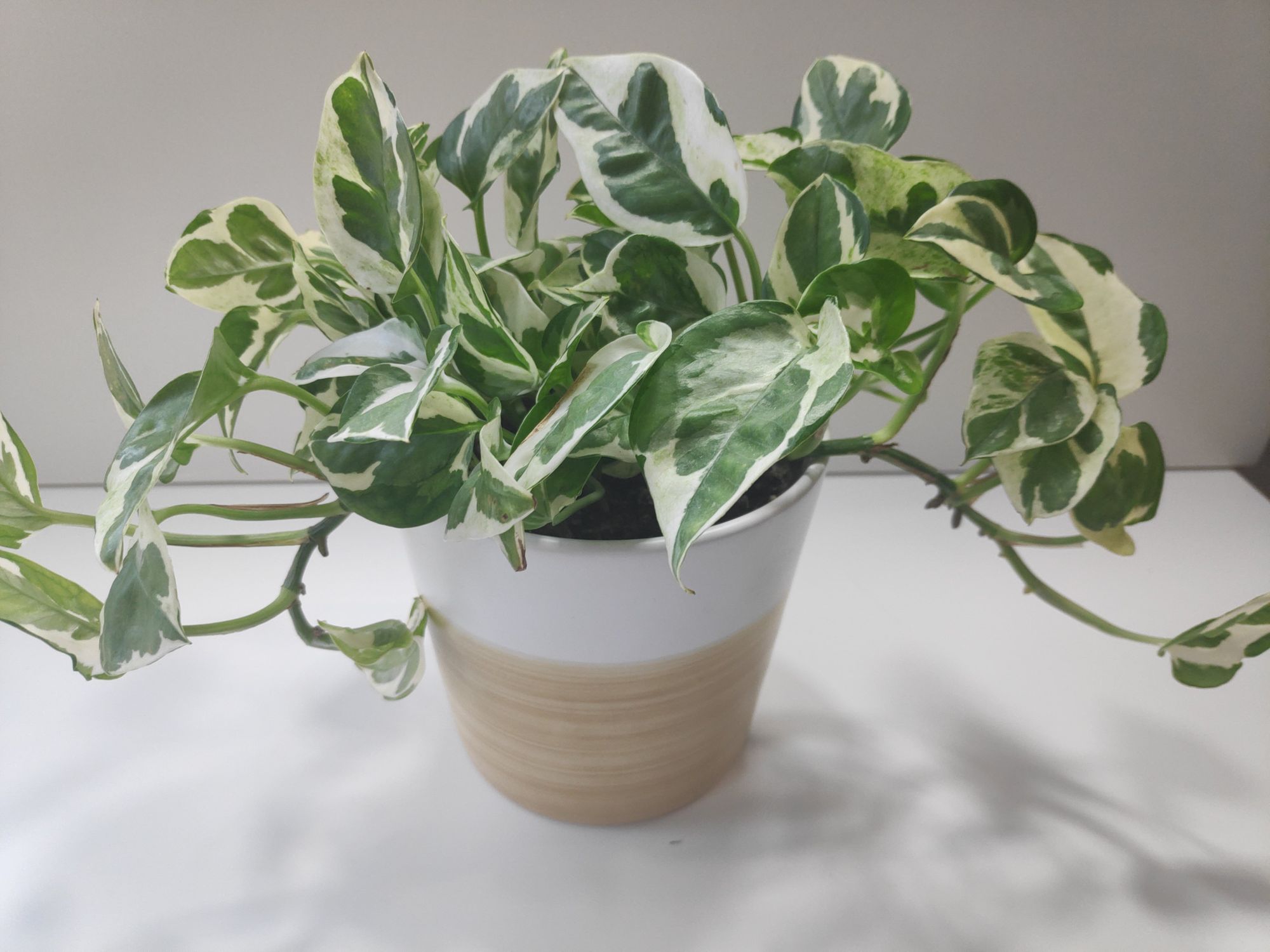
Watering and Humidity
Water your pothos when the top inch or so of soil feels dry to the touch. If you're not sure if your plant needs water, wait until the leafs droop. Pothos is a very vocal plant, and tells you when it's thirsty. Water thoroughly until water runs out of the bottom of the pot.
Be sure your pothos is planted in well-draining soil in a pot with drainage. Pothos does well in a glazed clay or plastic pot.
Losing leafs occasionally is normal, however if you notice many leafs yellowing at once this may be a sign of over watering and root rot.
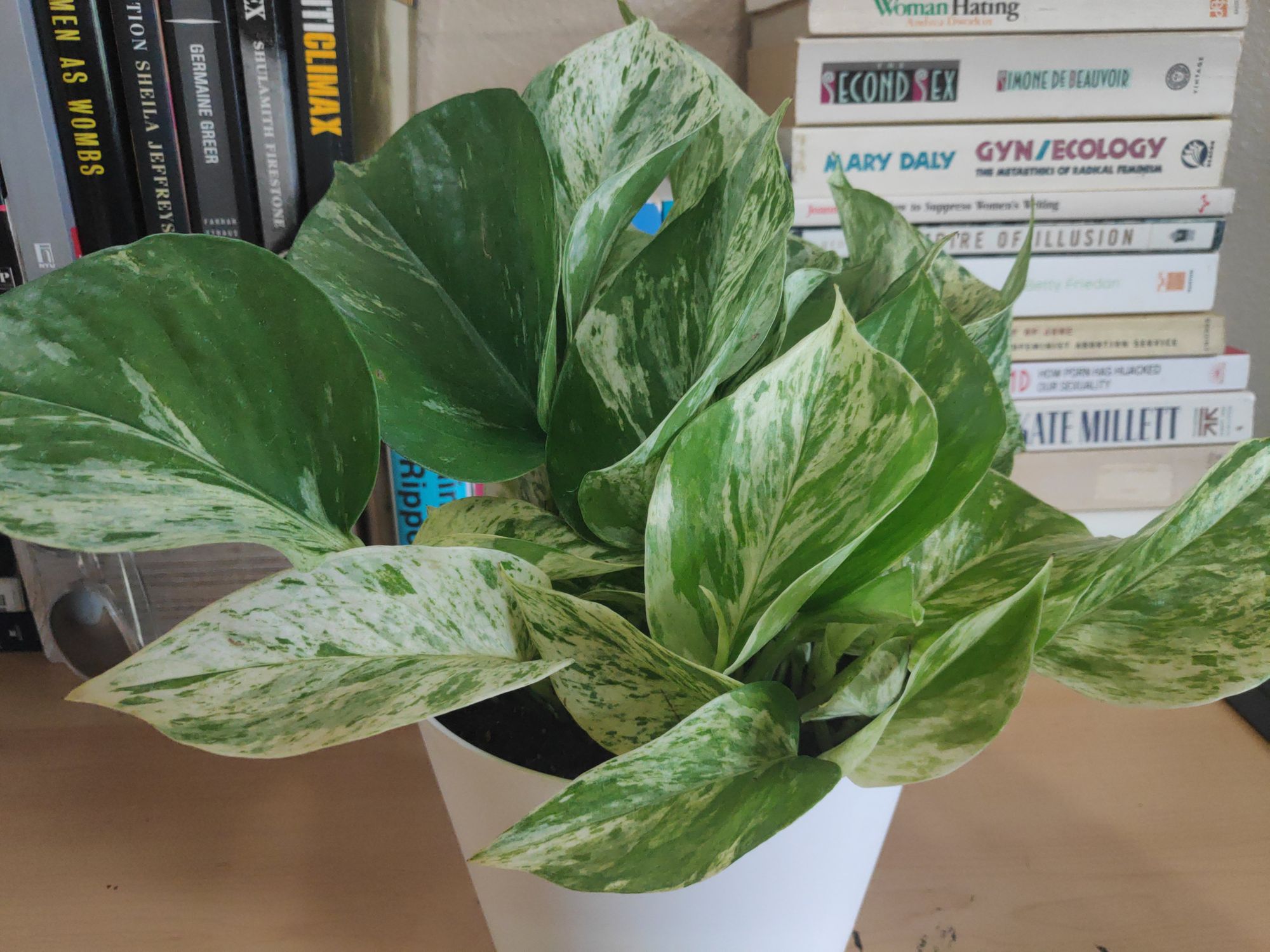
Propagation
Propagating pothos is incredibly easy. Simply take a stem cutting below a node (the bump on the stem from where the leaf grows) and plop the stem in water.
When the cutting has developed a decent root system, plant the cuttings in soil.
You may re-pot the rooted cuttings back into the mother plant to maintain a bushier plant.
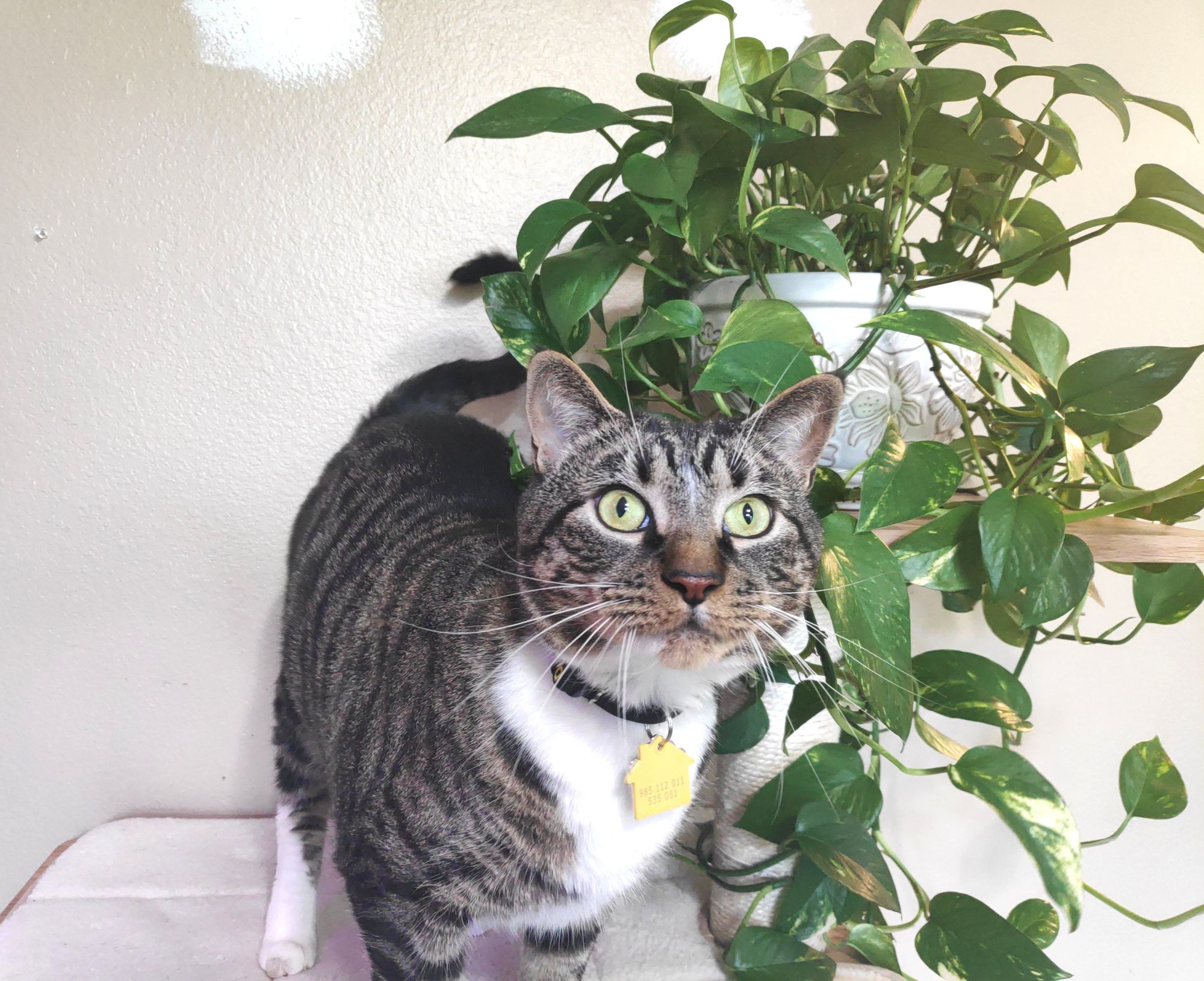
Pet safe plant
All varieties of Epiprenum aureum are safe for cats and dogs.
Be aware of impostors!
Be aware that some plants commonly labeled "pothos" are not actually Epiprenum aureum and may be dangerous to pets.
The plant commonly known as "silver pothos" or "satin pothos", Scindapsus pictus, is actually toxic to pets. Philodendron plants are also regularly mislabeled as pothos", and may be dangerous to pets.
